What is Pulse Welding? And How Does it Work?
Last Updated on
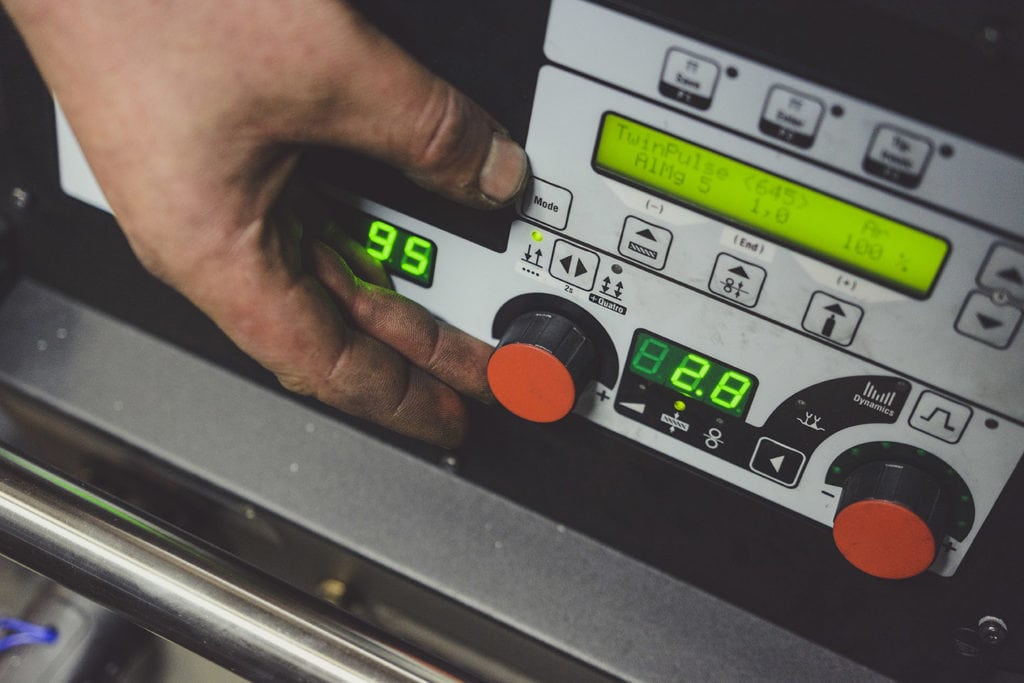
If you’re familiar with a wide variety of welding approaches, only then will you be a better welder, and eventually, take on more tasks. Among the most misapprehended techniques is known as pulse welding, which we’re going to discuss in detail in this guide.
If you’re searching for an accurate welding procedure, you may want to take into account pulse welding. Apart from creating alluring welds, it helps stop common weld faults and discontinuities.
Pulse welding is diversification on two core procedures usually learned in a welding training program: TIG) and MIG. In this article, we shall look at pulse welding and how it works. We’ll also discuss when you can use it with Tungsten Inert Gas and Metal Inert Gas welding procedures. Keep reading!
What is Pulse Welding?
It is (a variety of the conventional welding procedure) is a form where the electric current is pulsated. We expounded in the beginning what it implies. Nonetheless, let’s now discuss the pulse welding procedure in detail and comprehend everything it involves.
To comprehend it, we shall compare pulse welding with Tungsten Inert Gas Welding as it’s among the most widely used welding procedures these days. In TIG welding, you set the amperage on your welding machine to the maximum level you want. Then, you use the foot pedal to regulate its output.
During the TIG welding, you’ll keep the pedal throttle steady. Only little modifications are carried out if you want to add more heat or lessen it if it surpasses satisfactory levels. The output of the TIG torch is indicated in the distance to which the pedal is depressed.
When it comes to pulse welding, you’ll operate the foot pedal similar to what is done in TIG welding. The only divergence is that the TIG torch generates output in a pulsated wave rather than steady amperage.
Nonetheless, in pulse welding, you can utilize the foot pedal to modify to lessen or add heat if need be. It’s similar to TIG welding. Now that you comprehend better what is pulse welding, let’s look at how it operates and everything else you need to know.
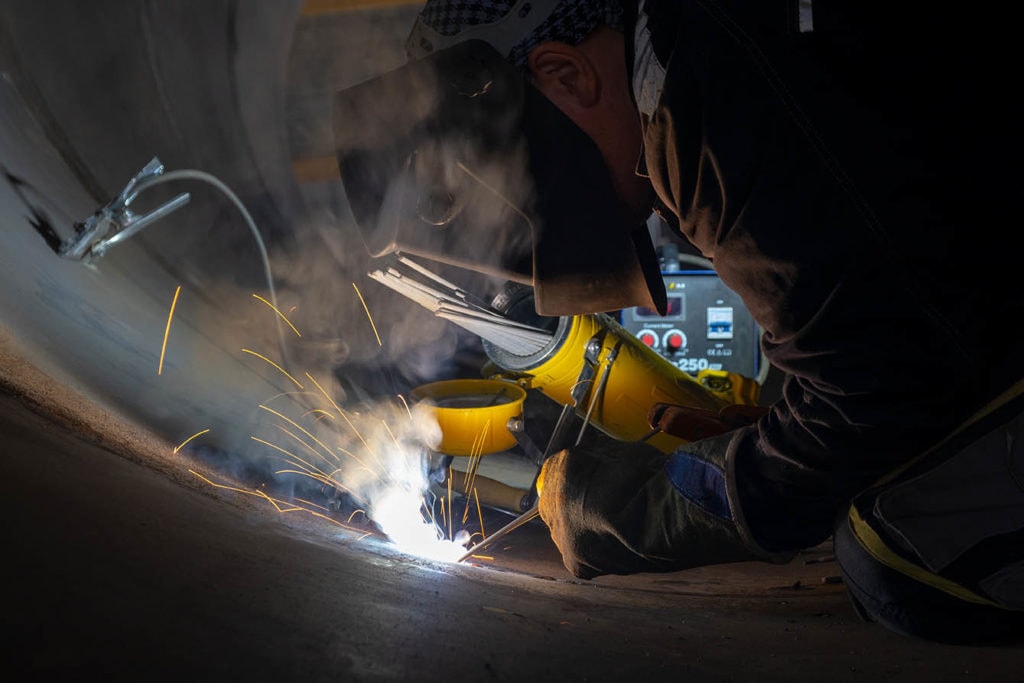
What Are the Common Terms Associated with Pulse Welding?
What’s Pulse Frequency?
It’s the recurrence at which the welding current changes from high amperage to a low current in one second. It’ll rely on how high you adjust the amperage on the welding machine. For instance, if you adjust the amperage to 50, then it’ll pulsate from peak to low fifty times every second. If you put it to one, then it’ll pulse just once per second.
Although you can adjust the amperage on your welding machine to any preferred level, it’s suggested that you set the pulse less than four or above 30. It’s because the strobe impact of frequencies between four and 30 may lead to lots of distress.
Nevertheless, ensure that you search for your endurance levels and adhere to them. Lower frequencies like once every second or a lesser amount are suggested because if you’re feeding your filler stick as per the pulse, it’ll be simpler in such levels.
It results in a more even ascetic weld. A higher pulse setting every second is the general rule of thumb when it comes to increased thickness in metal. If you have slender metals, then go for low pulse settings.
For instance, fifty or fewer pulses every second for 3 mm thick steel and one hundred pulses each second for 12 mm broad steel are suggested as appropriate pulses. Nonetheless, there are numerous varying beliefs on the perfect pulse rate. In other words, the perfect pulse frequencies are subjective and differ from one individual to the other.
What is Slope Down?
Once you set free the trigger of the torch, the slope down adjusts the power slope’s downtime. What is the downtime? It refers to the time you require to lessen power from the present welding current to zero. It assists in stopping burns and is helpful for welds that are terminated at the edge of the material.
What is Pulse Duty?
The pulse duty is in equilibrium with the time at the high current level and the low current in pulse mode. The equivalent time at peak and low is 50%. It’s because the TIG welders that permit users to regulate the setting usually have a 50% fixed setting on the pulse duty.
What is Gas Post Flow and Pre-Flow?
It employs both pulse welding and other different welding procedures. Before hitting an arc, you can adjust the gas to begin flowing. In this way, you can clean the welding area thoroughly. Besides, you’ll be assured of a good starting weld by wiping the starting area of the weld seam.
The post flow setting permits the gas flow to proceed even after you cease welding. Due to this, the weld condenses when in suitable atmospheric conditions. Nonetheless, after you set the trigger free and the welding ceases, you should grasp the torch used in welding over the weld until the gas halts flowing.
Those are some of the widespread phrases used in pulse welding. Therefore, if you comprehend these phrases, you’ll get a hint of what is pulse welding.
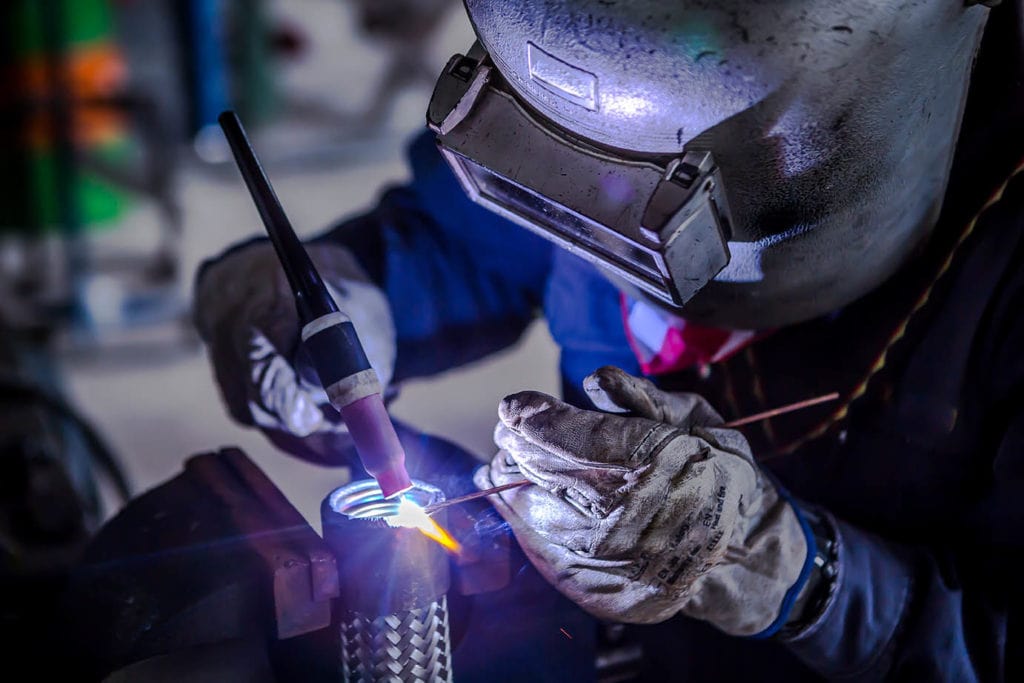
How Does Pulse TIG Welding Work?
In this pulse welding type, the operator uses a foot pedal to regulate the amperage output. Nonetheless, the TIG torch’s amperage output is a pulsated waveform rather than a regular stream of electric current.
If you were to trace out the alterations in electric current on a graph, the picture that comes out would be the shape of several waves.
How Does Pulse MIG Welding Work?
Current also changes in this pulse welding type. The approach was initially introduced to enhance the regulation over metal transfer if you’re using currents at low average levels. It depends on directing fast, peak-current pulses when working.
The result is a procedure where the filler metal is conveyed from the anode to the weld puddle with no contact. The anode doesn’t come into contact with the work. At the end of the anode, a droplet of melted metal is created for every pulse.
If the current reaches its peak, the small drops are pushed across the arc into the puddle. For every pulse, one drop is released.
What Are the Different Types of Pulse Welding?
When looking at types, we shall only discuss pulse GMAW procedures. There are two distinct types of pulsated GMAW processes: synergic and non-synergic.
In synergic, the level of power automatically changes to the wire’s velocity as it changes. It’s the most widespread technique in pulse GMAW procedures these days. The reason is that it’s the easiest when it comes to adjusting and attaining good welding parameters.
For instance, if the feed speed of the wire alters from 200 to 400 inches every minute, the length of the arc or power on the cable stays the same. This is about the level of power that was available on the 200 inches per minute.
On the other hand, if you’ll be using the non-synergic pulsated GMAW procedure, the operator changes the power to correspond to the wire feed speed.
Where is Pulse Welding Used?
The weld’s condensation activity is supported by pulse welding in and out of position. It takes place when you stop the melted from spattering out of the joint during the background cycle. Therefore, pulse welding is suggested when welding slender metals if there’s a high risk of burning.
Adjust the pulse at a frequency equivalent to or less than one if you want a pleasant effect. Do the same if you want to generate a visually alluring weld too. Then, insert the filler stick as per the pulse. You can utilize pulse welding to reduce the general heat of the weld. Do this if you want to weld non-ferric metals that have peak heat conductivity like aluminum.
Besides, with this welding variant, you can achieve a more penetrating weld without adding too much heat to the weld.
High current facilitates this welding type while the regulated cooling is made possible by the low current. Though you’ll have a high current that permits more penetrating weld seams, you’ll also have a lower current with pulse welding, and this will ensure the material is cooler.
Why Should You Use Pulse Welding?
It’s among the most commonly asked questions concerning pulse welding. There are a couple of reasons you should use it. First of all, pulse welding assists you in accomplishing weld penetration. It’s similar to other welding variants that have minimal heat and power.
Pulse welding saves you energy and also stops the material from bending during the welding procedure. Besides, the welder’s working duty cycle ratings depend on the connection between the amperes used and the time taken by the welded metal to cool off and be ready to be used again.
The time needed for the machine to cool off is based on the power needed by it. The less power used the less time required for the device to cool down. The other reason pulse welding is preferred is that it facilitates the formation of a dependable and more even weld seam.
Lastly, if you create a weld using pulse welding, it’s visually alluring and appears like a precise weld formed by a machine. All the above reasons should motivate anyone to take into account pulse welding for their weld.
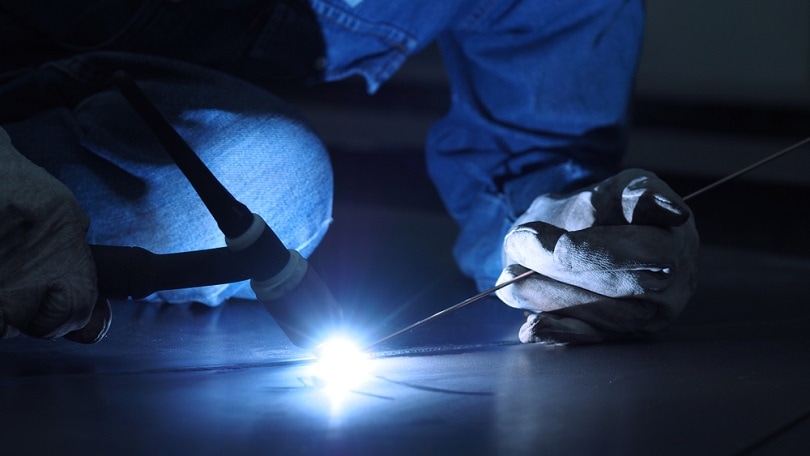
Advantages of Pulse Welding
- With pulse welding, the general heat output is lessened. It also decreases the heat-affected area and contortion.
- It has lessened spatter (minimizes secondary operations and rework).
- Pulse welding has high deposition rates out-of-position (it’s a product of fast cooling in the background current of the cycle).
- It has excellent fusion as compared to other transfer modes (many people presume that pulse welding lessens penetration. However, that isn’t true).
- Pulse welding lessens fume levels produced by the arc than other transfer styles.
Disadvantages of Pulse Welding
- Typically, the gear used in pulse welding is more costly as compared to traditional step-down transformer sources of power.
- The gas mixtures needed are also pricey than the widely used Argon-Carbon dioxide mixture or 100% Carbon dioxide.
- The high arc energy generates high radiated heat levels and a radiant arc. Therefore, for the welding lens, you need darker shade and additional protection (gloves with heat protection).
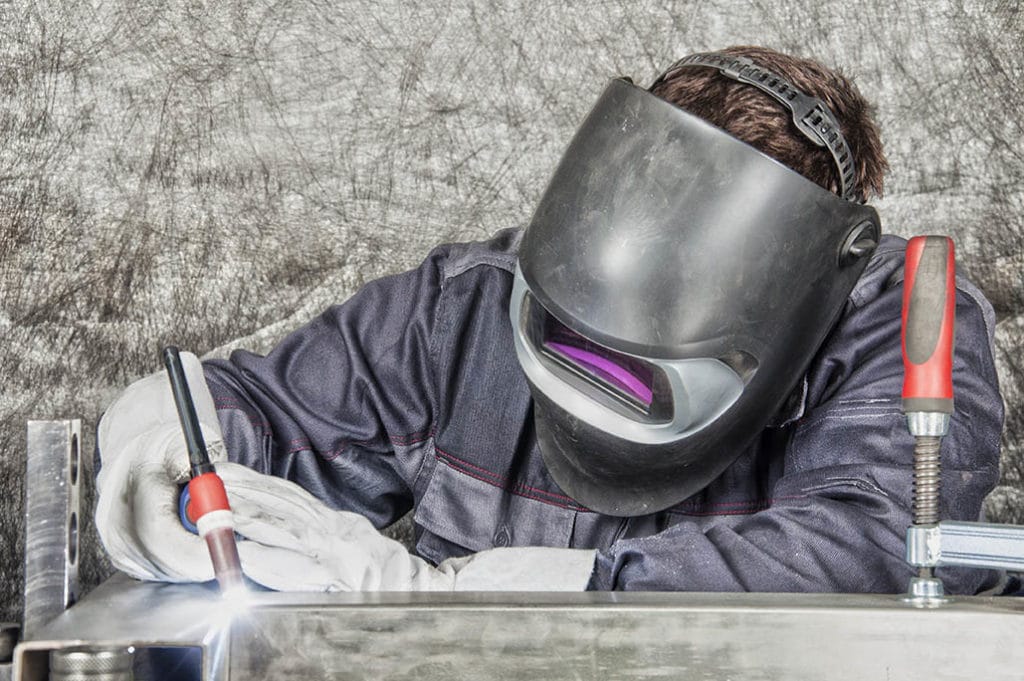
FAQs
What is pulse transfer welding?
Pulsated GMAW is an altered spray transfer procedure in which the source of power changes between high voltage or current and a low current. It takes place from 30 to 400 times every second.
When the current is changing, the high current squeezes off a small drop of cable and drives it to the weld joint.
In pulse welding, what is trim?
By reducing your trim from 1.00 to 0.85, you’ll have minimized the length of the arc. You’ll also have lessened the voltage of the weld. Likewise, by increasing trim to 1.15, you’ve increased the arc length and the weld voltage too. It implies that when you minimized voltage, you were also lessening the length of the arc.
What is primary power in welding?
It’s frequently referred to as the amperage that’s currently available in the welding device from the shop’s primary power line and input line voltage. It’s usually given in Watts (W) or Kilowatts (KW). Primary input power is AC (Alternating Current) and can be one-phase or three-phase.
What is dual pulse welding?
The MIG/MAG technique with dual pulse permits current pulsing control and modification of wire feeding velocity. In this way, the appearance of the weld is improved. Current pulses take place in two ranges if you’re welding using the MIG/MAG technique with a dual pulse.
What’s the principal benefit of pulsed spray welding?
You can use pulsated spray welding to weld numerous metals with diverse thicknesses. It offers good fusion at the weld toes. It faster as compared to globular transfer and short-circuit. Also, when compared to short-circuit, pulse spray welding produces 90% less spatter.
Final Thoughts
Pulse welding enhances productivity by offering high deposition rates. Besides, if you use pulse welding to weld, it’s less intricate as compared to other methods of transfer which decreases productivity.
Lastly, pulse welding will ensure that you get a more consistent arc and a premium quality finish as compared to other methods of transfer. That’s what you ultimately need with any welding procedure.
Featured Image Credit: Skinfaxi, Shutterstock
